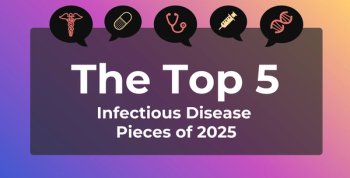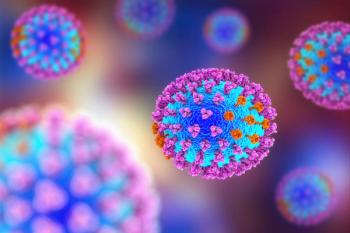
Study Identifies Possible Molecular Target for Clostridioides difficile Infection Therapies
A study funded by the National Institutes of Health found that Glucosyltransferase domain is a possible molecular target for therapeutic interventions for Clostridioides difficile infection.
Glucosyltransferase domain (GTD) is a possible molecular target for therapeutic interventions for
These findings could lead to new treatments, according to the research,
The work was based on earlier findings that established the structural basis for Toxin B recognition of the small GTPases Rho and R-Ras families.
CDI is the leading cause of antibiotic-associated diarrhea and gastroenteritis-associated deaths worldwide, accounting for 500,000 cases and 29,000 deaths annually in the United States.
There is growing global concern surrounding the emerge and spread of hypervirulent C. difficile strains, resembling the occurrence of new virus variants in current COVID pandemic. TcdB is one of two homologous C. difficile exotoxins, and TcdB alone is capable of causing the full spectrum of CDI diseases.
“We focused on the structure and function of TcdB’s crucial GTD, which is the toxin’s ‘warhead.’ The GTD is delivered by the toxin inside the host cells and causes most of the cytosolic damage to patients,” Rongsheng Jin, PhD, professor in the Department of Physiology and Biophysics at the University of California, Irvine, School of Medicine, and corresponding author,
The team also demonstrated how the classic form of TcdB and the hypervirulent TcdB recognize their human targets in different ways, which leads to distinct structural changes to the host cells caused by bacterial invasion.
“Once the GTD of TcdB is inside the cells, it is shielded by our cells and becomes inaccessible to passive immunotherapy. But our studies suggest that small molecule inhibitors could be developed to disarm the GTD, which will directly eliminate the root cause of disease symptoms and cellular damage,” Jin said. “This new strategy can potentially be integrated with and complement other CDI treatment regiments.”
This work was supported by the National Institutes of Health.
Reference
Liu Z, Zhang S, Chen P. Structural basis for selective modification of Rho and Ras GTPases by Clostridioides difficile toxin B. Sci. Adv. Published online October 22, 2021. doi: 10.1126/sciadv.abi4582
Newsletter
Stay ahead of policy, cost, and value—subscribe to AJMC for expert insights at the intersection of clinical care and health economics.







































